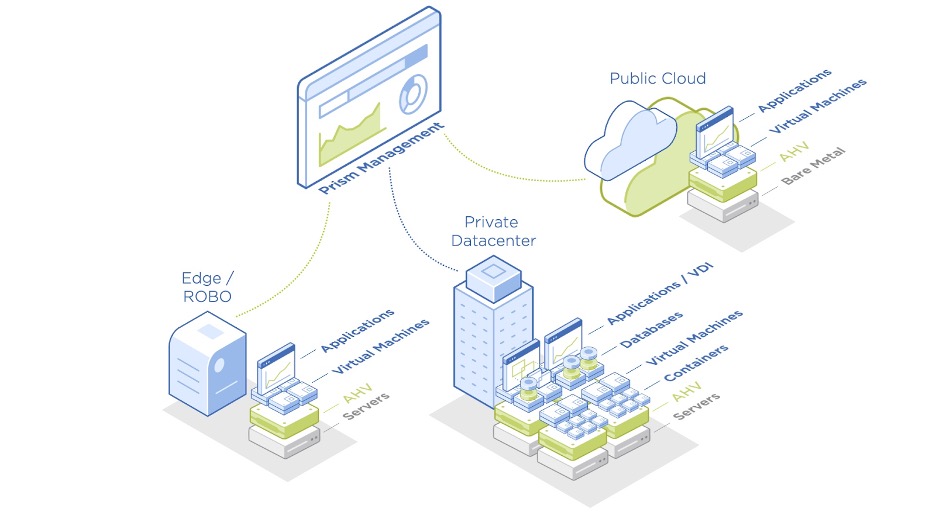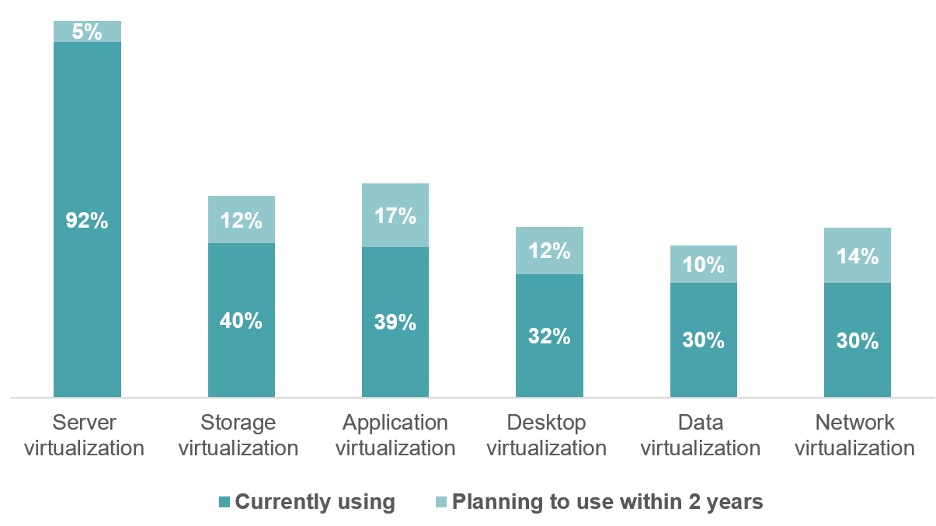The Why and How of Server Virtualization

Modern businesses store their data and apps everywhere: across on-premises data centers, public clouds, and even in the edge. Though these applications and workloads run on server hardware, acquiring a separate server for each digital process your business performs is impractical. That is why server virtualization is essential for organizations with on-site servers and those seeking to use cloud servers from service providers.
Key Takeaways:
- Virtualization capitalizes on the excess processing power of a server by creating multiple isolated server instances within a single host.
- Adopting virtualization practices saves enterprises money they might otherwise spend on unnecessary server hardware and excessive energy consumption.
- Multiple types of virtualization are made possible either through hypervisor software or the inherent functionality of the operating system.
Cloud computing is a methodology made viable mainly in part due to virtualization. Cloud platform products go hand in hand with virtualization, and vendors of such platforms are often able to collaborate with consumers on building a virtualization strategy that works well for their unique circumstances.
What is server virtualization?
Server virtualization uses software applications such as a hypervisor to create multiple virtual servers within one physical server. The process isolates each virtual server from one another, each running on its own operating system.
Virtualization is possible when the physical server has more processing power than it needs for its essential tasks. Virtual servers draw from the physical server's excess resources, allowing for a wider variety of applications and workloads to run on a single server.

Conceptual example of a hybrid cloud, showing the role of virtual machines and servers in the environment
The isolated nature of virtual servers is conducive to server owners renting out space to third parties as a service. Multiple virtual servers might exist on the same hardware but function as separate machines. This makes it easy to keep virtual machines (VMs) secure and maintain the privacy of customers or business partners.
This ability to use a finite number of physical servers to run an indeterminate number of VMs is the basis of any practical cloud computing solution, whether for internal or consumer use.
Why adopt server virtualization?
The adoption of server virtualization, either as a practice within your own IT teams or as a customer of an infrastructure-as-a-service (IaaS) provider, stands to benefit your organization by:
- Reducing costs of hardware investment and maintenance
- Lowering energy consumption
- Allowing for faster deployment of applications and workloads
- Eliminating server complexity for the end user
- Enabling efficient disaster recovery through replication
Most physical servers use only a fraction of their power. Procuring multiple servers for tasks that a single hardware stack can accomplish through virtualization is a needless expense. At the same time, deploying workloads on a VM saves valuable time you might otherwise spend installing and configuring an entirely new server.
Research indicates that at least 92% of businesses use server virtualization, with another 5% planning to adopt the technology.

Graph showing the adoption of various virtualization technologies by businesses, notably server virtualization at 92%
The large number of companies implementing virtualization technology exemplifies the ubiquitous nature of this practice. Even businesses with minimal IT expertise can quickly identify the cost benefits of virtualization. At the same time, those with a strong presence in the tech industry can go further and extract even more value from virtual servers.
How does server virtualization work?
There are three kinds of server virtualization, and each works differently. Though each type is unique, each uses a physical server as a host and recognizes the VM as a guest.
Full virtualization is the method of choice for providers offering their server space for cloud computing or providing a platform as a service. This method uses hypervisor software to monitor the host’s resources and allocate processing power to the guest servers. One drawback of this method is that the hypervisor consumes processing power and can slow down the processes running in virtual servers under certain conditions.
Para-virtualization treats each virtual server and its operating systems as a network that functions as a cohesive unit. This method does not entail the complete isolation of virtual servers and, thus, is not an ideal server virtualization method when providing space to independent users.
OS-level virtualization (also known as containerization) differs from other methods as it does not use hypervisor software. The host operating system is shared among multiple isolated user space instances (containers) that can run multiple applications. Each container is isolated from the others and appears to have its own file system, networking, and process space, but they all share the same kernel.
What should you seek in a server virtualization provider?
When your organization is ready to adopt virtual servers to run applications and workloads, opting for a virtualization platform as a service enables you to do so without needing to understand underlying complexity and provides easy scalability as your operations grow.
Your choice of a virtualization platform provider should be a vendor prioritizing security and privacy and accommodating legacy and modern cloud-native applications. The vendor should also supply a reliable hypervisor solution capable of powering your operations with minimal risk of slowdown or downtime.
The Nutanix AHV platform is a server virtualization solution built to sustain VMs, containers and the workloads running within them. Implement the platform as you see fit with your existing private, public, or hybrid cloud environment.
Learn more about why virtualization and other workloads are ideal for the cloud environment and why cloud-native computing is a necessary step forward for enterprises.
© 2023 Nutanix, Inc. All rights reserved. For additional legal information, please go here.